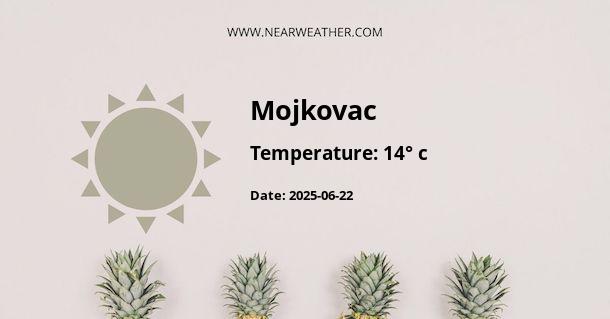Discovering the Climate and Weather of Opština Mojkovac, Montenegro
Located within the northern reaches of Montenegro, Opština Mojkovac boasts a climate influenced by both its mountainous terrain and its proximity to the Adriatic Sea. Understanding the weather patterns requires a detailed exploration of its seasonal variations, precipitation levels, and temperature trends.
General Climate Overview
The climate of Mojkovac can be classified as a hemiboreal climate, which features characteristics of both continental and Mediterranean influences. Due to its position in the Balkans, the area experiences hot summers and cold winters, with variations depending on elevation and geographical location.
Seasonal Weather Conditions
Spring
Spring in Mojkovac is a period of transition, with temperatures progressively rising. However, the weather can be unpredictable, with some late snowfall possible, especially in elevated areas.
Summer
Summers are generally warm with clear skies. Due to the town's high altitude, the heat is typically moderate compared to coastal Montenegrin towns, ensuring a pleasant environment for outdoor activities.
Autumn
This season is characterized by a gradual cooling and an increase in precipitation. Autumn is when Mojkovac’s natural landscape becomes a canvas of stunning fall colors, attracting visitors for the scenery and moderate climate.
Winter
Winter in Mojkovac is marked by cold temperatures and snow, particularly in the mountainous regions. Skiing and other winter sports are popular, driven by reliable snow conditions throughout the season.
Temperature Trends
- January is the coldest month, with average low temperatures around -3°C (27°F) and highs of 1°C (34°F).
- July is the warmest month, with an average high of 26°C (79°F) and nighttime lows around 12°C (54°F).
- Spring and fall see moderate temperatures that provide a comfortable climate for outdoor activities and exploration.
Precipitation Patterns
Rainfall in Mojkovac is relatively evenly distributed throughout the year, with certain peaks during the seasons. The area experiences an average annual precipitation of approximately 1000 to 1500 mm (39 to 59 inches).
- Spring tends to have moderate rainfall as snow begins to melt and provides additional moisture.
- Early summer is drier, though short and heavy showers can occur due to thunderstorms.
- Autumn months often bring greater rainfall, contributing to the lush environment.
- Winter sees the most precipitation in the form of snow, particularly in the surrounding mountains.
Average Annual Temperature and Precipitation
Quantitative data is vital for a complete understanding of Mojkovac's climate. Below is a table depicting average annual temperatures and precipitation:
| Month | Average High (°C) | Average Low (°C) | Precipitation (mm) |
|---|---|---|---|
| January | 1 | -3 | 95 |
| February | 3 | -2 | 85 |
| March | 7 | 0 | 80 |
| April | 13 | 4 | 75 |
| May | 18 | 8 | 85 |
| June | 21 | 11 | 70 |
| July | 26 | 12 | 60 |
| August | 25 | 12 | 70 |
| September | 21 | 9 | 95 |
| October | 15 | 5 | 105 |
| November | 7 | 1 | 110 |
| December | 2 | -2 | 120 |
Extreme Weather and Climate Events
While the climate of Mojkovac is relatively moderate, the region is not immune to extreme weather events:
- Floods: The Tara River, which flows through Mojkovac, can overflow its banks due to heavy rainfall, particularly during spring and autumn.
- Snowstorms: Harsh winter snowstorms can occur, leading to significant snowfall, with implications for travel and infrastructure.
Microclimates and Local Variations
The diverse topography of Mojkovac results in microclimates, particularly in areas with varying elevation. Local climate variations can be quite significant, affecting agriculture and biodiversity in the region.
Climate Adaptations
The inhabitants of Mojkovac have adapted to their climate in several ways, from the architecture designed to withstand cold winters to agricultural practices that are in harmony with the seasonal cycles.
Climate Change Considerations
As the global climate changes, so too does the climate in Mojkovac. Studies indicate shifts in precipitation and temperature patterns, which may affect the local environment and economy.
Guidance for Travelers
To make the most of your visit to Mojkovac, consider these travel tips based on its weather and climate:
- Bring warm clothing if visiting in winter - ski gear if you plan to hit the slopes.
- Pack lighter, breathable clothing for the summer, with a jacket for cooler evenings.
- Always have rain gear on hand, as weather can change quickly in mountainous regions.
- Check local weather forecasts regularly to plan daily activities.
Conclusion
In summary, the climate of Opština Mojkovac offers a rich tapestry of seasonal variations that cater to a diverse range of activities throughout the year. From winter sports enthusiasts to summer hikers, Mojkovac’s climate has something for everyone. With its beautiful natural landscapes, weather patterns that provide all four seasons in abundance, and an adaptive local culture, this area of Montenegro is a unique and inviting destination for travelers and residents alike.
A - Mojkovac's Latitude is 42.959171 & Longitude is 19.588329.
A - Weather in Mojkovac is 5° today.
A - Climate Conditions in Mojkovac shows overcast clouds today.
A - Humidity in Mojkovac is 88% today.
A - Wind speed in Mojkovac is 6.48 km/h, flowing at 240° wind direction. today.
